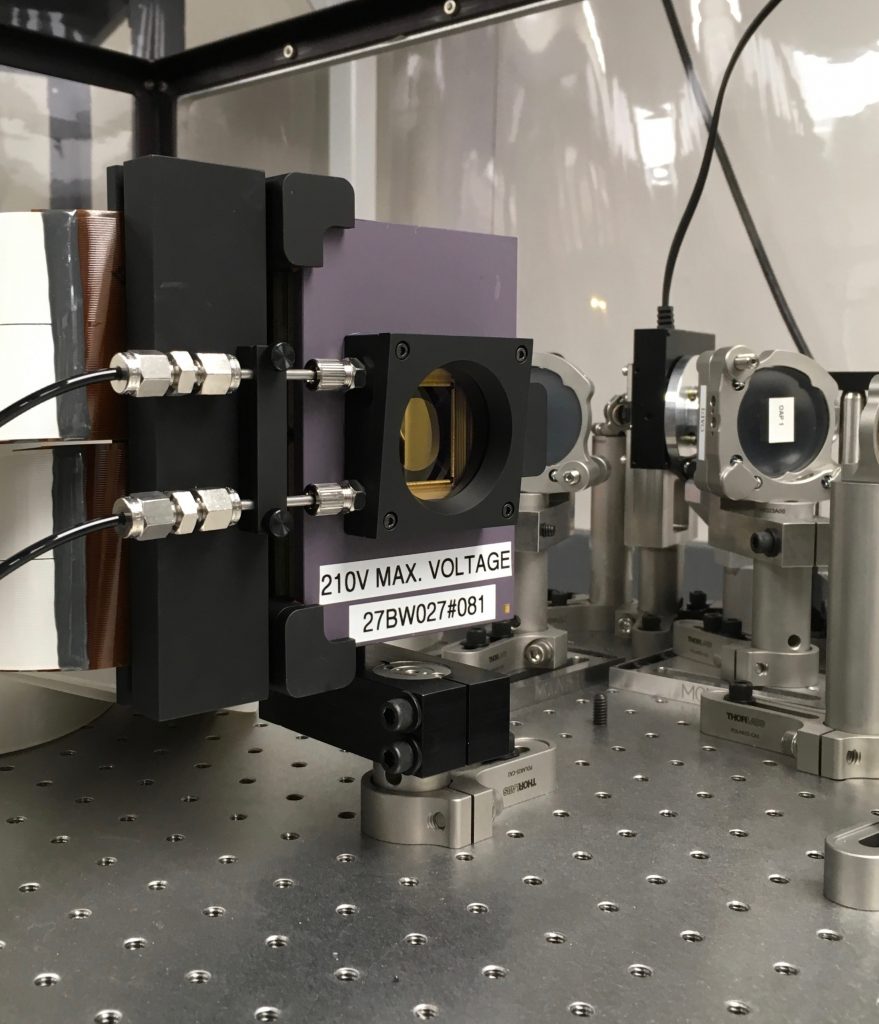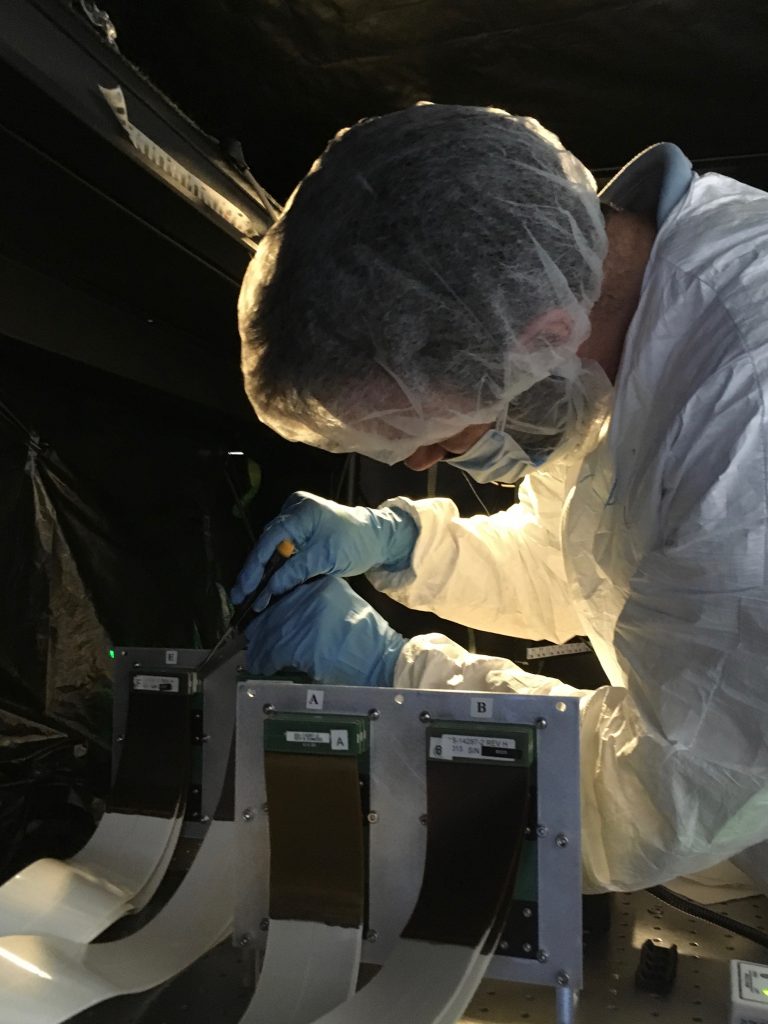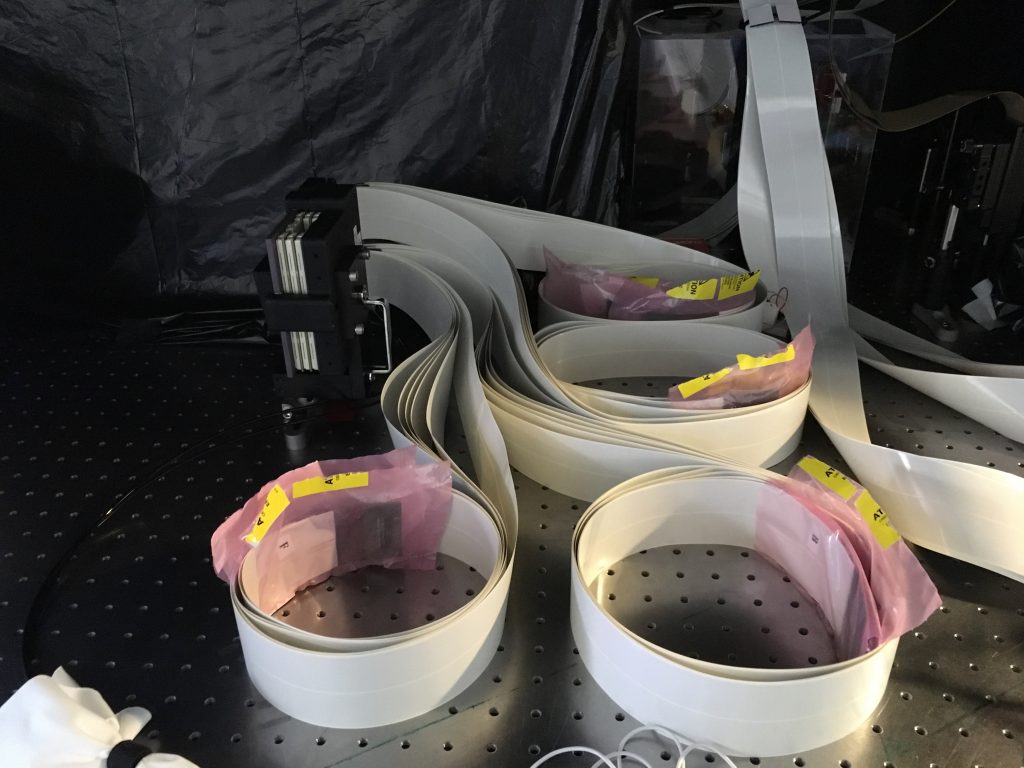* with two DMs! But not at the same time…yet.
Late last week, after painstakingly recabling and aligning the BMC 2K following its relocation to the MagAO-X instrument, we closed the loop at 3.6kHz with 2040 actuators. See Jared’s video below:
What exactly are we looking at in this video?
On the far left is the image from our pyramid wavefront sensor. It’s tricky to interpret, but the four pupil images are a bit (but not exactly) like a 2-axis knife-edge test, with the key difference that aberrant rays are refracted into the different pupil images rather than simply blocked or passed. Through the magic of linear algebra (and lots of calibration), each frame from the wavefront sensor is converted into a map of voltages to apply to the DM to cancel this wavefront error.
The DM commands can be found along the bottom row of windows in the video. It’s split across multiple channels, but the important one is the image on the far right: each pixel is a command we’re sending to an individual actuator on the DM. With the loop open, we’re just creating simulated atmospheric turbulence. With the loop closed, it’s the same simulated turbulence plus the correction computed from the wavefront sensor.
And, finally, on the upper right is the “science” PSF, doing its thing. (That last image on the desktop—the pixelated one in the top middle—is the command sent to the ALPAO DM, but it’s not doing anything here other than holding a flat shape.)
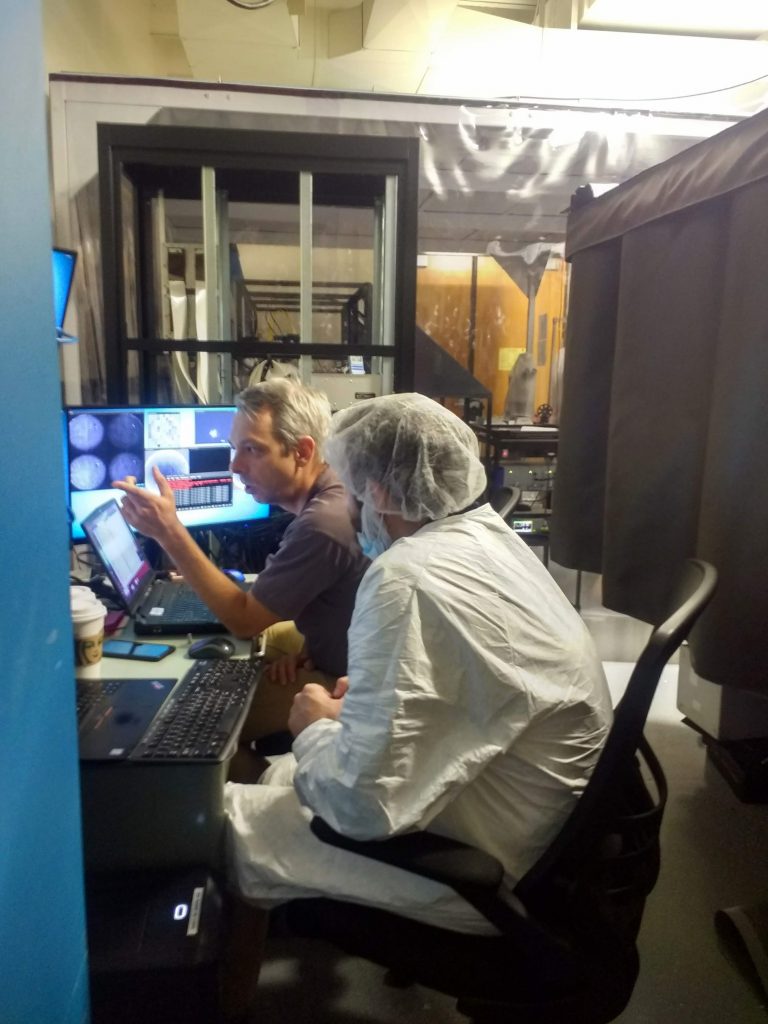
Before we could close the loop, the 2K had to be aligned, which isn’t a trivial task when you’ve just dropped it into the middle of a rather complicated optical system and expect the beam to be centered on the DM to better than one actuator (which have a pitch of 400 microns). Enter Laird and Alex, experts on all things alignment. To aid in their efforts, we placed a pattern on the DM that could be seen both on the wavefront sensor and by eye in the beam reflected by the DM.
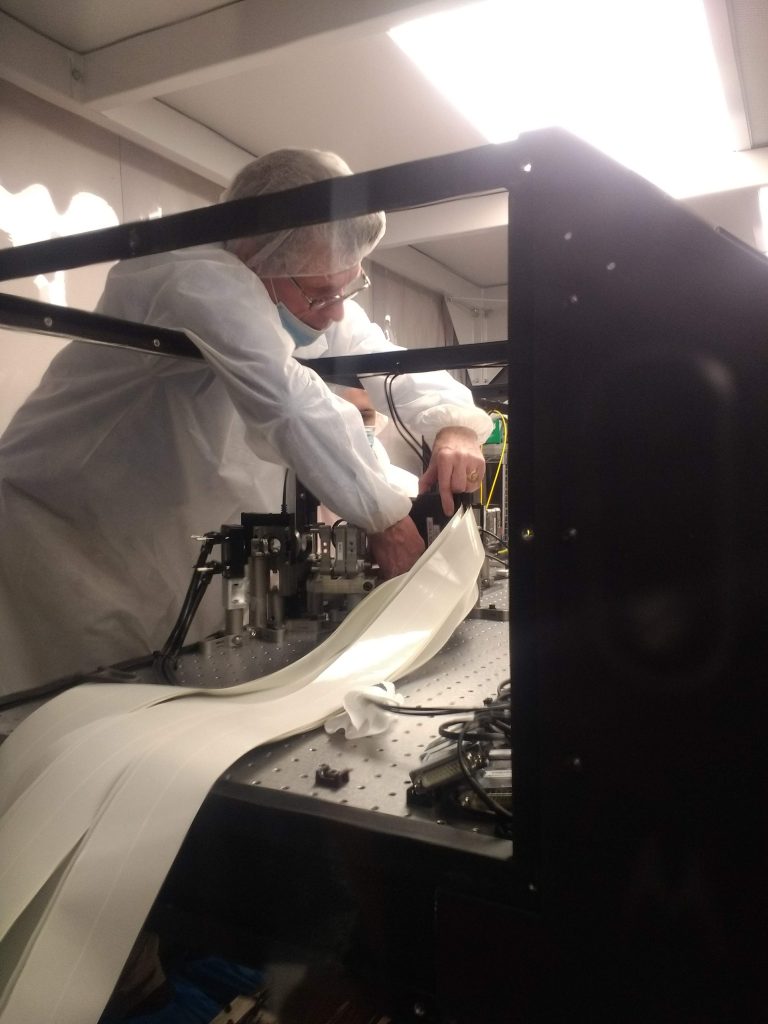
Laird and (the mostly obscured) Alex wrangle DM cables while aligning. 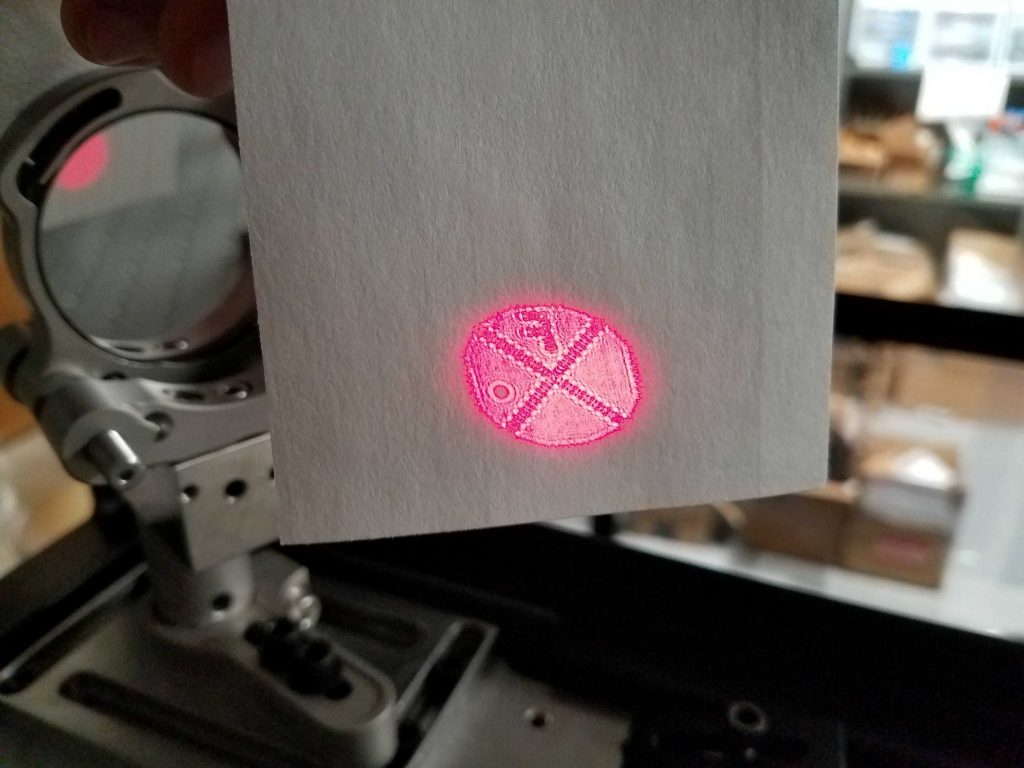
The DM alignment pattern seen in the reflected beam. 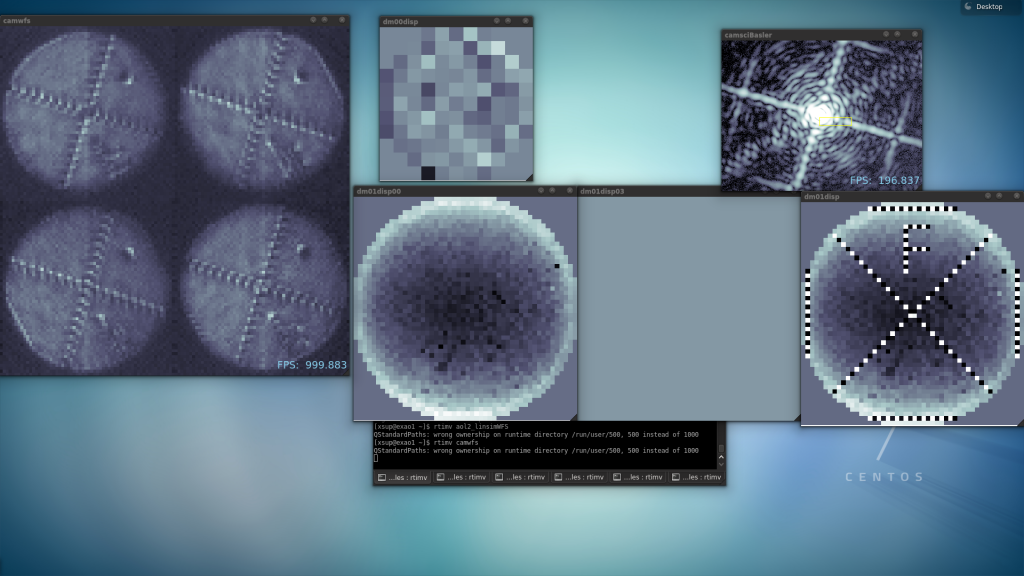
The alignment PSF: more fun than an airy disk?
This isn’t the first time we’ve closed the loop on MagAO-X. A month ago, we closed the loop on the low-order ALPAO DM-97 (the woofer). We have video evidence of that too:
And finally, to procrastinate studying for finals a few moments more, here’s my half-micron (peak to valley) entry into the ongoing MagAO-X logo contest, imprinted on the 2K and measured on our Zygo interferometer:

